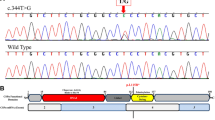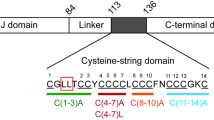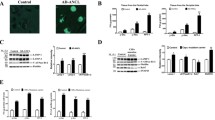Abstract
Neuronal ceroid lipofuscinoses (NCL) are a group of inherited neurodegenerative disorders with lysosomal pathology (CLN1-14). Recently, mutations in the DNAJC5/CLN4 gene, which encodes the presynaptic co-chaperone CSPα were shown to cause autosomal-dominant NCL. Although 14 NCL genes have been identified, it is unknown if they act in common disease pathways. Here we show that two disease-associated proteins, CSPα and the depalmitoylating enzyme palmitoyl-protein thioesterase 1 (PPT1/CLN1) are biochemically linked. We find that in DNAJC5/CLN4 patient brains, PPT1 is massively increased and mis-localized. Surprisingly, the specific enzymatic activity of PPT1 is dramatically reduced. Notably, we demonstrate that CSPα is depalmitoylated by PPT1 and hence its substrate. To determine the consequences of PPT1 accumulation, we compared the palmitomes from control and DNAJC5/CLN4 patient brains by quantitative proteomics. We discovered global changes in protein palmitoylation, mainly involving lysosomal and synaptic proteins. Our findings establish a functional link between two forms of NCL and serve as a springboard for investigations of NCL disease pathways.




Similar content being viewed by others
References
Aby E, Roth A, Gumps K, Sigmon S, Jenkins SE, Kim JJ et al (2013) Mutations in palmitoyl-protein thioesterase 1 alter exocytosis and endocytosis at synapses in Drosophila larvae. Fly 7(4):267–279
Ahtiainen L, Luiro K, Kauppi M, Tyynela J, Kopra O, Jalanko A (2006) Palmitoyl protein thioesterase 1 (PPT1) deficiency causes endocytic defects connected to abnormal saposin processing. Exp Cell Res 312:1540–1553. doi:10.1016/j.yexcr.2006.01.034
Ahtiainen L, Van Diggelen OP, Jalanko A, Kopra O (2003) Palmitoyl protein thioesterase 1 is targeted to the axons in neurons. J Comp Neurol 455:368–377. doi:10.1002/cne.10492
Benitez BA, Alvarado D, Cai Y, Mayo K, Chakraverty S, Norton J et al (2011) Exome-sequencing confirms DNAJC5 mutations as cause of adult neuronal ceroid-lipofuscinosis. PLoS One 6:e26741. doi:10.1371/journal.pone.0026741
Benjamini YHY (1995) Controlling the false discovery rate: a practical and powerful approach to multiple testing. J R Stat Soc Ser B 57:289–300
Bordner KA, George ED, Carlyle BC, Dugue A, Kitchen RR, Lam TT et al (2011) Functional genomic and proteomic analysis reveals disruption of myelin-related genes and translation in a mouse model of early life neglect. Front Psychiatry 2:18. doi:10.3389/fpsyt.2011.00018
Cadieux-Dion M, Andermann E, Lachance-Touchette P, Ansorge O, Meloche C, Barnabe A, Kuzniecky RI et al (2013) Recurrent mutations in DNAJC5 cause autosomal dominant Kufs disease. Clin Genet 83:571–575. doi:10.1111/cge.12020
Chandra G, Bagh MB, Peng S, Saha A, Sarkar C, Moralle M, Zhang Z, Mukherjee AB (2015) Cln1 gene disruption in mice reveals a common pathogenic link between two of the most lethal childhood neurodegenerative lysosomal storage disorders. Hum Mol Genet 24:5416–5432. doi:10.1093/hmg/ddv266
Chandra S, Gallardo G, Fernandez-Chacon R, Schluter OM, Sudhof TC (2005) Alpha-synuclein cooperates with CSPalpha in preventing neurodegeneration. Cell 123:383–396. doi:10.1016/j.cell.2005.09.028
Cotman SL, Karaa A, Staropoli JF, Sims KB (2013) Neuronal ceroid lipofuscinosis: impact of recent genetic advances and expansion of the clinicopathologic spectrum. Curr Neurol Neurosci Rep 13:366. doi:10.1007/s11910-013-0366-z
Fernandez-Chacon R, Wolfel M, Nishimune H, Tabares L, Schmitz F, Castellano-Munoz M et al (2004) The synaptic vesicle protein CSP alpha prevents presynaptic degeneration. Neuron 42:237–251
Forrester MT, Hess DT, Thompson JW, Hultman R, Moseley MA, Stamler JS, Casey PH (2011) Site-specific analysis of protein S-acylation by resin-assisted capture. J Lipid Res 52:393–398. doi:10.1194/jlr.D011106
Greaves J, Lemonidis K, Gorleku OA, Cruchaga C, Grefen C, Chamberlain LH (2012) Palmitoylation-induced aggregation of cysteine-string protein mutants that cause neuronal ceroid lipofuscinosis. J Biol Chem 287:37330–37339. doi:10.1074/jbc.M112.389098
Gundersen CB, Mastrogiacomo A, Faull K, Umbach JA (1994) Extensive lipidation of a Torpedo cysteine string protein. J Biol Chem 269:19197–19199
Hofmann SL, Das AK, Lu JY, Soyombo AA (2001) Positional candidate gene cloning of CLN1. Adv Genet 45:69–92
Kang R, Wan J, Arstikaitis P, Takahashi H, Huang K, Bailey AO et al (2008) Neural palmitoyl-proteomics reveals dynamic synaptic palmitoylation. Nature 456:904–909. doi:10.1038/nature07605
Kim SJ, Zhang Z, Sarkar C, Tsai PC, Lee YC, Dye L, Mukherjee AB (2008) Palmitoyl protein thioesterase-1 deficiency impairs synaptic vesicle recycling at nerve terminals, contributing to neuropathology in humans and mice. J Clin Invest 118:3075–3086. doi:10.1172/JCI33482
Lehtovirta M, Kyttala A, Eskelinen EL, Hess M, Heinonen O, Jalanko A (2001) Palmitoyl protein thioesterase (PPT) localizes into synaptosomes and synaptic vesicles in neurons: implications for infantile neuronal ceroid lipofuscinosis (INCL). Hum Mol Genet 10:69–75
Lu JY, Hofmann SL (2006) Thematic review series: lipid posttranslational modifications. Lysosomal metabolism of lipid-modified proteins. J Lipid Res 47:1352–1357. doi:10.1194/jlr.R600010-JLR200
Luiro K, Kopra O, Lehtovirta M, Jalanko A (2001) CLN3 protein is targeted to neuronal synapses but excluded from synaptic vesicles: new clues to Batten disease. Hum Mol Genet 10:2123–2131
Lyly A, von Schantz C, Heine C, Schmiedt ML, Sipila T, Jalanko A, Kyttala A (2009) Novel interactions of CLN5 support molecular networking between neuronal ceroid lipofuscinosis proteins. BMC Cell Biol 10:83. doi:10.1186/1471-2121-10-83
Nijssen PC, Ceuterick C, van Diggelen OP, Elleder M, Martin JJ, Teepen JL, Tyynela J, Roos RA (2003) Autosomal dominant adult neuronal ceroid lipofuscinosis: a novel form of NCL with granular osmiophilic deposits without palmitoyl protein thioesterase 1 deficiency. Brain Pathol 13:574–581
Noskova L, Stranecky V, Hartmannova H, Pristoupilova A, Baresova V, Ivanek R et al (2011) Mutations in DNAJC5, encoding cysteine-string protein alpha, cause autosomal-dominant adult-onset neuronal ceroid lipofuscinosis. Am J Hum Genet 89:241–252. doi:10.1016/j.ajhg.2011.07.003
Palmer DN, Barry LA, Tyynela J, Cooper JD (2013) NCL disease mechanisms. Biochim Biophys Acta 1832:1882–1893. doi:10.1016/j.bbadis.2013.05.014
Pickrell AM, Youle RJ (2015) The roles of PINK1, parkin, and mitochondrial fidelity in Parkinson’s disease. Neuron 85:257–273. doi:10.1016/j.neuron.2014.12.007
Santavuori PGI, Haltia M, Rapola J, Lake BD, Tyynelä J, Peltonen L (1999) CLN1: infantile and other types of NCL with GROD. IOS Press, Amsterdam
Sardiello M, Palmieri M, di Ronza A, Medina DL, Valenza M, Gennarino VA, Di Malta C, Donaudy F, Embrione V, Polishchuk RS, Banfi S, Parenti G, Cattaneo E, Ballabio A (2009) A gene network regulating lysosomal biogenesis and function. Science 325:473–477. doi:10.1126/science.1174447
Scifo E, SzwajdaA DebskiJ, Uusi-Rauva K, Kesti T, Dadlez M, Gingras AC, Tyynela J, Baumann MH, Jalanko A, Lalowski M (2013) Drafting the CLN3 protein interactome in SH-SY5Y human neuroblastoma cells: a label-free quantitative proteomics approach. J Proteome Res 12:2101–2115. doi:10.1021/pr301125k
Scifo E, Szwajda A, Soliymani R, Pezzini F, Bianchi M, Dapkunas A, Debski J, Uusi-Rauva K, Dadlez M, Gingras AC, Tyynela J, Simonati A, Jalanko A, Baumann MH, Lalowski M (2015) Proteomic analysis of the palmitoyl protein thioesterase 1 interactome in SH-SY5Y human neuroblastoma cells. J Proteomics 123:42–53. doi:10.1016/j.jprot.2015.03.038
Siintola E, Partanen S, Stromme P, Haapanaen A, Haltia M, Maehlen J, Lehesjoki AE, Tyynela J (2006) Cathepsin D deficiency underlies congenital human neuronal ceroid-lipofuscinosis. Brain 129:1438–1445. doi:10.1093/brain/awl107
Sims KB, Cole AJ, Sherman JC, Caruso PA, Snuderl M (2011) Case records of the Massachusetts General Hospital. Case 8-2011. A 32-year-old woman with seizures and cognitive decline. N Engl J Med 364:1062–1074. doi:10.1056/NEJMcpc1013927
Tobaben S, Thakur P, Fernandez-Chacon R, Sudhof TC, Rettig J, Stahl B (2001) A trimeric protein complex functions as a synaptic chaperone machine. Neuron 31:987–999
van Diggelen OP, Keulemans JL, Winchester B, Hofman IL, Vanhanen SL, Santavuori P, Voznyi YV (1999) A rapid fluorogenic palmitoyl-protein thioesterase assay: pre- and postnatal diagnosis of INCL. Mol Genet Metab 66:240–244. doi:10.1006/mgme.1999.2809
van Diggelen OP, Thobois S, Tilikete C, Zabot MT, Keulemans JL, van Bunderen PA et al (2001) Adult neuronal ceroid lipofuscinosis with palmitoyl-protein thioesterase deficiency: first adult-onset patients of a childhood disease. Ann Neurol 50:269–272
Velinov M, Dolzhanskaya N, Gonzalez M, Powell E, Konidari I, Hulme W et al (2012) Mutations in the gene DNAJC5 cause autosomal dominant Kufs disease in a proportion of cases: study of the Parry family and 8 other families. PLoS One 7:e29729. doi:10.1371/journal.pone.0029729
Virmani T, Gupta P, Liu X, Kavalali ET, Hofmann SL (2005) Progressively reduced synaptic vesicle pool size in cultured neurons derived from neuronal ceroid lipofuscinosis-1 knockout mice. Neurobiol Dis 20:314–323. doi:10.1016/j.nbd.2005.03.012
Wan J, Savas JN, Roth AF, Sanders SS, Singaraja RR, Hayden MR, Yates JR 3rd, Davis NG (2013) Tracking brain palmitoylation change: predominance of glial change in a mouse model of Huntington’s disease. Chem Biol 20:1421–1434. doi:10.1016/j.chembiol.2013.09.018
Warrier V, Vieira M, Mole SE (2013) Genetic basis and phenotypic correlations of the neuronal ceroid lipofusinoses. Biochim Biophys Acta 1832:1827–1830. doi:10.1016/j.bbadis.2013.03.017
Winklhofer KF, Tatzelt J, Haass C (2008) The two faces of protein misfolding: gain- and loss-of-function in neurodegenerative diseases. EMBO J 27:336–349. doi:10.1038/sj.emboj.7601930
Yu CS, Cheng CW, Su WC, Chang KC, Huang SW, Hwang JK, Lu CH (2014) CELLO2GO: a web server for protein subCELlular LOcalization prediction with functional gene ontology annotation. PloS One 9:e99368
Zhang YQ, Chandra SS (2014) Oligomerization of cysteine string protein alpha mutants causing adult neuronal ceroid lipofuscinosis. Biochim Biophys Acta 1842:2136–2146. doi:10.1016/j.bbadis.2014.07.009
Zhang YQ, Henderson MX, Colangelo CM, Ginsberg SD, Bruce C, Wu T, Chandra SS (2012) Identification of CSPalpha clients reveals a role in dynamin 1 regulation. Neuron 74:136–150. doi:10.1016/j.neuron.2012.01.029
Acknowledgments
We thank Dr. Katherine Sims for contributing pathologic material from the Massachusetts General Hospital NCL Biorepository. We also thank Ted Voss, Jean Kanyo, and Kathrin Wilczak for assistance with sample prep, data collection, and LFQ analysis, respectively. We would like to thank Art Horwich, Shawn Ferguson, Pietro De Camilli, Thomas Biederer, and members of our laboratories for critical discussions related to this paper. We would also like to thank Zack Gomez for data analysis. This work was supported by the Battens Disease Research and Support Association Grant, NIH R01NS083846, R01NS064963 (to S.S.C.), NIDA Neuroproteomic Center Grant (5 P30 DA018343-07) and by a NRSA NS078861-02 (to M.X.H) as well as CTSA Grant UL1 RR024139 from the National Center for Research Resources (NCRR) and the National Center for Advancing Translational Science (NCATS).
Author contributions
M.X.H. and G.S.W. performed all immunohistochemical and immunoblot analyses; M.X.H. and G.S.W. maintained and lentivirally transduced primary mouse neuronal cultures; G.S.W. performed in vitro depalmitoylation assays, IPA and CELLO analyses of MS data; Y.Z. performed RT-PCR; A.F.R. and N.G.D. purified palmitoylated proteins for MS using AcylRAC; G.D. performed PPT1 activity assays; T.T.L. performed MS analyses; F.D. provided statistical analyses of MS data; M.V., N.D., J.F.S. and P.C.G.N. clinically characterized patients and provided control and patient tissue; S.D.G. provided additional samples; M.X.H., G.S.W., and S.S.C. were involved in study design, analyzed data, and wrote the paper. M.X.H. and G.S.W. contributed equally to this study. All authors discussed the results and commented on the manuscript.
Author information
Authors and Affiliations
Corresponding author
Ethics declarations
Conflict of interest
The authors declare no competing financial interests.
Ethical standard
All procedures performed in studies involving animals were in accordance with the ethical standards of the institution or practice at which the studies were conducted.
Additional information
Michael X. Henderson and Gregory S. Wirak have contributed equally to this work.
Electronic supplementary material
Below is the link to the electronic supplementary material.
Rights and permissions
About this article
Cite this article
Henderson, M.X., Wirak, G.S., Zhang, Yq. et al. Neuronal ceroid lipofuscinosis with DNAJC5/CSPα mutation has PPT1 pathology and exhibit aberrant protein palmitoylation. Acta Neuropathol 131, 621–637 (2016). https://doi.org/10.1007/s00401-015-1512-2
Received:
Revised:
Accepted:
Published:
Issue Date:
DOI: https://doi.org/10.1007/s00401-015-1512-2




